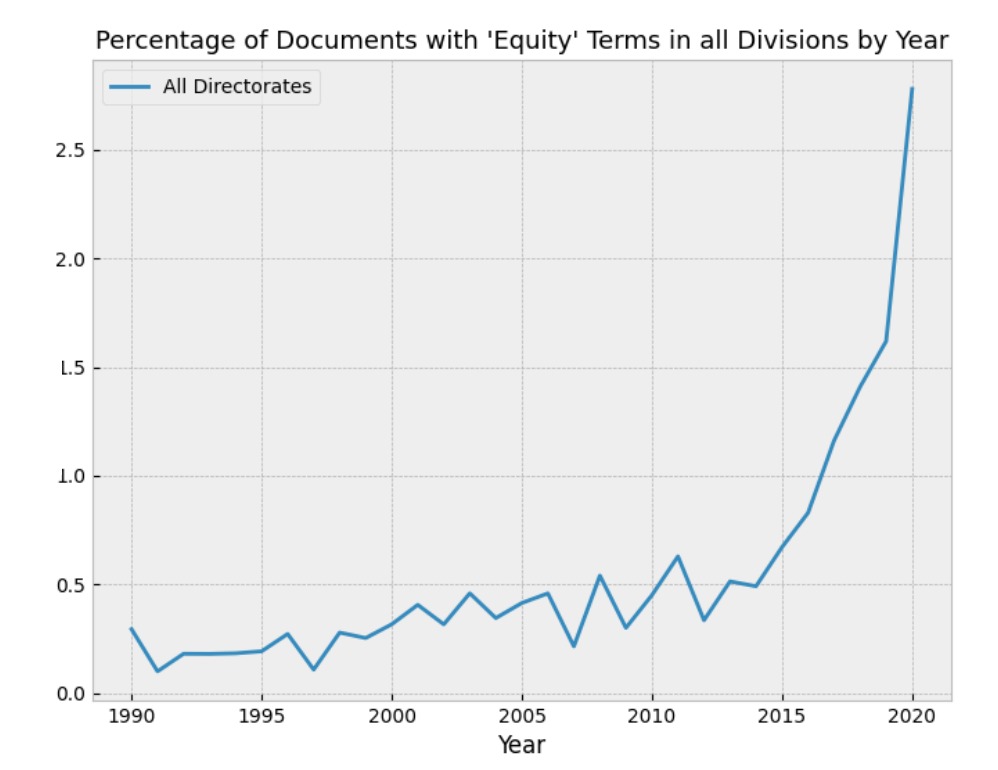Increased politicization and homogeneity in NSF grants
- This report uses natural language processing to analyze the abstracts of successful grants from 1990 to 2020 in the seven fields of Biological Sciences, Computer & Information Science & Engineering, Education & Human Resources, Engineering, Geosciences, Mathematical & Physical Sciences, and Social, Behavioral & Economic Sciences.
- The frequency of documents containing highly politicized terms has been increasing consistently over the last three decades. As of 2020, 30.4% of all grants had one of the following politicized terms: “equity,” “diversity,” “inclusion,” “gender,” “marginalize,” “underrepresented,” or “disparity.” This is up from 2.9% in 1990. The most politicized field is Education & Human Resources (53.8% in 2020, up from 4.3% in 1990). The least are Mathematical & Physical Sciences (22.6%, up from 0.9%) and Computer & Information Science & Engineering (24.9%, up from 1.5%), although even they are significantly more politicized than any field was in 1990.
- At the same time, abstracts in most directorates have been becoming more similar to each other over time. This arguably shows that there is less diversity in the kinds of ideas that are getting funded. This effect is particularly strong in the last few years, but the trend is clear over the last three decades when a technique based on word similarity, rather than the matching of exact terms, is used.
That is from a new CSPI (Richard Hanania’s group) study by Leif Rasmussen.
